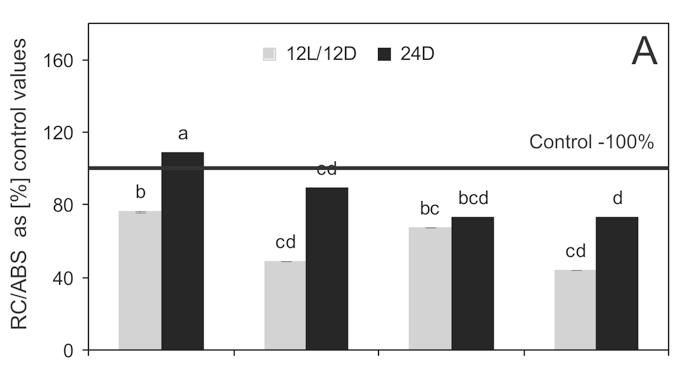
Paper category: Short communication
Corresponding author: Katarzyna Możdżeń (kasiamozdzen@interia.pl)
DOI: 10.1515/ohs-2018-0019
Received: September 7, 2017
Accepted: November 21, 2017
Full text: here
Citation (APA style):
Abstract
Paramecium bursaria (Ciliophora) is a cosmopolitan unicellular organism that plays a significant role in aquatic ecosystems. P. bursaria contains symbiotic algae and this association is a mutual symbiosis. The aim of the present study was to determine the activity of photosystem II (PSII) in Chlorella sp. inside P. bursaria cells. Ciliates were incubated for 7 days at different temperatures from 6 to 18°C, under the circadian cycle: 12 h light/12 h dark, at light intensity of 200 μmol m<sup>−2</sup> s<sup>−1</sup> and under constant darkness conditions. The control group was kept at a temperature of 18°C under constant light conditions. Changes in PSII were monitored using different fluorescence parameters. Differences in responses between endosymbiotic algae of two P. bursaria strains – Ard7 from a warm climate and KD64 from a cold climate – were determined. The highest photosynthetic activity of P. bursaria green endosymbionts was observed at a temperature of 18°C, regardless of the light conditions. Algae from warm climate were more sensitive to cold temperature stress than algae from P. bursaria collected in cold climate.

Be the first to comment